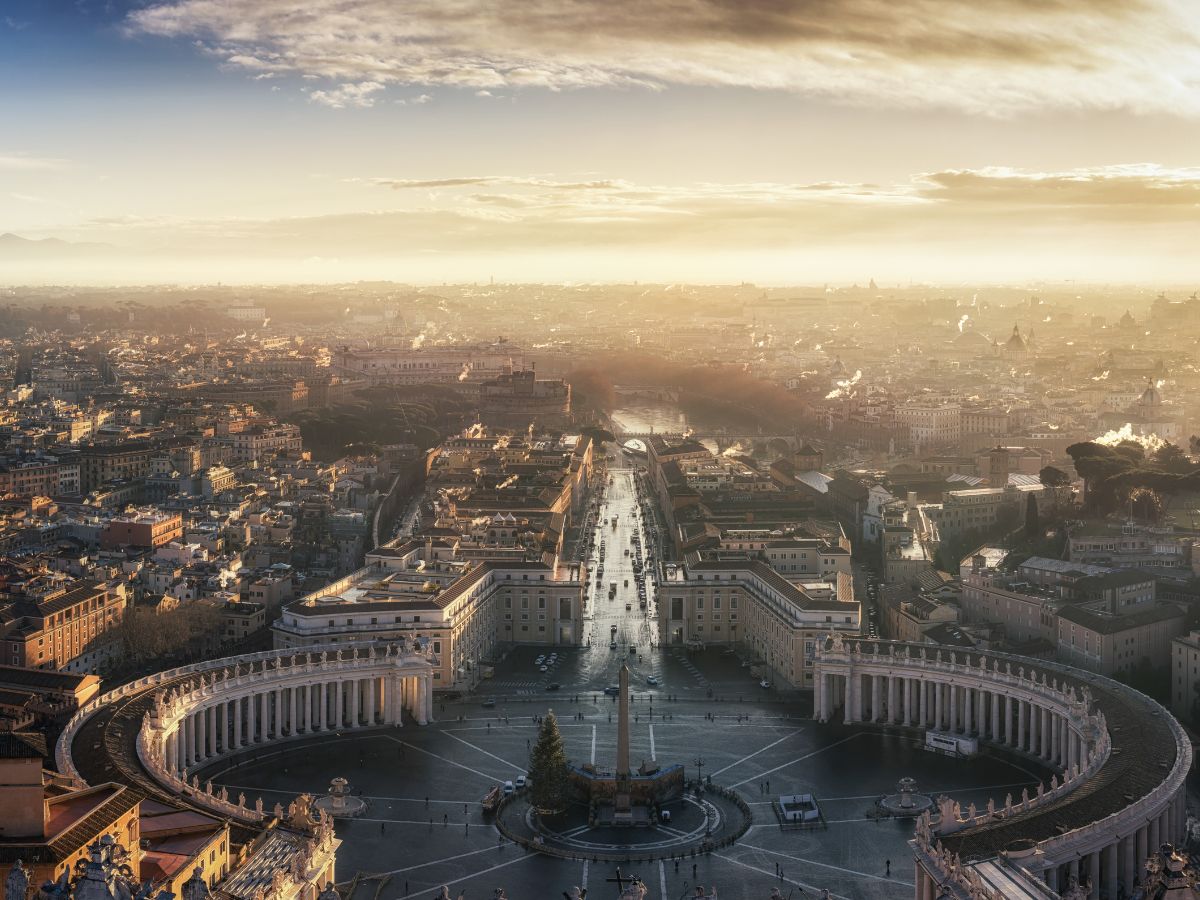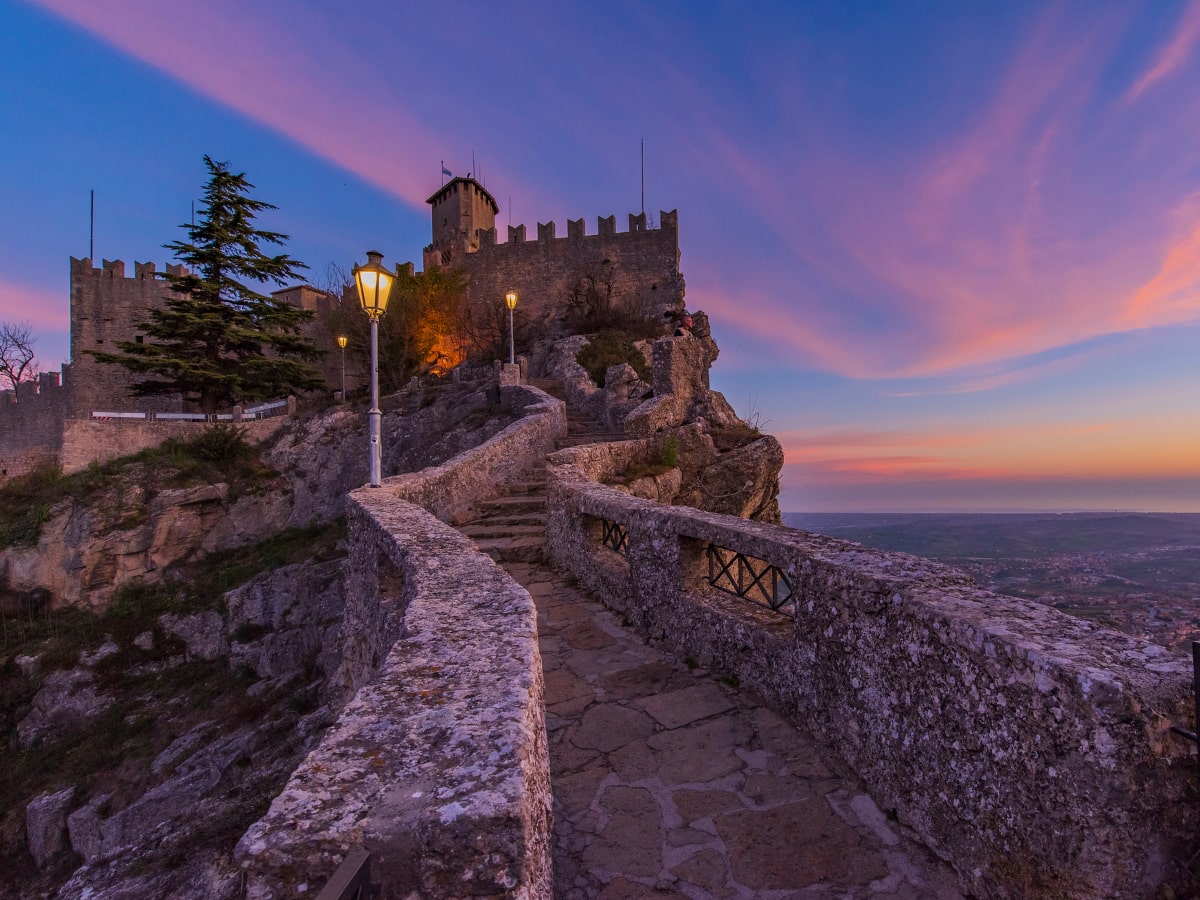In this post, we’re going to look at the smallest countries in the world by their surface land area. As you will find out, there are some seriously tiny microstates and small countries that are smaller than many towns and cities yet exist as independent states, set their own rules and have their own flags.
For the purposes of this article, we are defining a country by ISO 3166-1 rules which attempts to give a bit of clarity on those places which fall into a grey area when it comes to whether they are fully independent states or not. The likes of Taiwan, Puerto Rico and a host of islands with links to European countries such as Britain and France are not classed as countries by this criteria, yet tiny microstates such as Monaco and Liechtenstein are.
Measurements are according to land area and to the nearest km² unless a decimal is used.
The 10 Smallest Countries in the World – by Total Land Area
1. Vatican City – 0.49 km²

Even taking into account all those partially recognised and not fully independent states, Vatican City still comes out as the smallest country in the world. At less than half a kilometre squared, it is no bigger than a pretty small village, yet the Vatican is fully independent by just about any measure.
It is a tiny enclave within the Italian city of Rome and the home of the Catholic Church. While nearly two thousand years have passed since the days of Saint Peter, widely considered to be the first pope, the Vatican was for most of that period part of the Italian state before formally ratifying its independence in 1929.
It is also the smallest country in the world by population with around 800 people, although a large portion of that number reside elsewhere meaning in reality the population is made up of a small number of clergymen, Swiss Guards and their family members.
2. Monaco – 2 km²
Monaco, the second smallest country in the world, is only four times bigger than the Vatican City and not too far away but it’s safe to say it is a very different kind of place. Known as a playground for the rich and famous, Monaco is the world’s most densely populated country with an estimated population of just less than 40,000 squeezed into this tiny microstate on the French Riviera.
According to UN data, it also has the world’s highest GDP so it’s no surprise that this is quite a pricey yet popular travel destination with many visitors still flocking to Monaco’s shores, often in their luxury yachts.
Despite strong links to France which borders it to the east, north and west, Monégasque is regarded as a distinct ethnic group and is even a language, even though French is the official language of the state which has its own monarchy, currently headed by Albert II, Prince of Monaco.
3. Nauru – 21 km²

To the Pacific Ocean we head next to find tiny Nauru, the smallest island country in the world. It also ranks as the world’s smallest republic and unlike Monaco and the Vatican, it is certainly not a city state.
Nauru is an isolated island very close to the equator and it’s nearest neighbour is some 300 km away (Banaba Island in Kiribati). Around 10,000 people live on Nauru today and it’s believed to have first been inhabited some 3,000 years ago by Micronesian and Polynesian tribes.
It wasn’t even discovered by westerners until the late 18th or early 19th century when it was dubbed “Pleasant Island” by the captain of a passing ship. It has since fallen under the control of the Germans and Japanese before extensive mining by British, Australian and New Zealand companies caused widespread damage to its landscape with some suggestions the whole population may have to relocate to Australia at one point. Despite that, Nauru remains home to many families today and has now been fully independent for more than 50 years.
4. Tuvalu – 26 km²
Located some 1400 km to the southeast of Nauru, Tuvalu is another tiny island nation in the Polynesian region of the South Pacific. It lies a fraction to the west of the International Date Line and as a result is one of the easternmost countries in the world as we typically look at a map. It’s also sadly one of the most likely to disappear with rising sea levels a major threat to the sheer existence of a country that has been ranked as the least visited nation on earth.
English and Tuvaluan are the two official languages and Tuvalu still bears the Union Jack on its flag and it is the smallest member of the Commonwealth, having formally declared independence in 1978, joining the United Nations 22 years later.
While similar in size to Nauru and in the same part of the world, Tuvalu is quite different in that it is made up of nine main islands spread over quite a large area, as well as a number of tiny islets and atolls. In centuries gone by, Polynesians would frequently canoe between the different islands.
5. San Marino – 61 km²

Back to Europe for another of the world’s smallest countries. By comparison, San Marino is relatively large in that the combined land area of all of the four smallest countries would fit within it.
Like the Vatican City, San Marino is entirely enclosed by Italy and it lies only around 10 km inland from the Italian resort of Rimini. It is situated in the Apennine Mountain Range and is considered one of the most economically stable countries in the world with no national debt and one of the highest GDPs per capita.
Its history is quite a fascinating one and unlike many of the world’s other microstates, it has survived as an independent country for a long period, separating from the Roman Empire at the turn of the 4th Century and forming its own constitution in the year 1600. Political events in Italy have frequently trickled over into San Marino though and for 20 years in the early part of the 20th Century, it was ruled by the Sammarinese Fascist Party, closely aligned to Benito Mussolini’s Italian government.
The 10 smallest countries in the world are rounded off by Liechtenstein (160 km²), the Marshall Islands (181 km²), Saint Kitts and Nevis (261 km²), the Maldives (298 km²) and Malta (316 km²).
The Smallest Country in Every Continent
| Continent | Smallest Country | Area in km² |
| Asia | The Maldives | 298 |
| Africa | Seychelles | 455 |
| North America | Saint Kitts and Nevis | 261 |
| South America | Suriname | 156,000 |
| Europe | Vatican City | 0.49 |
| Oceania | Nauru | 21 |
The five smallest countries are all in either Europe or Oceania. The smallest country in Asia is The Maldives, which has a slightly smaller land area than the city state of Singapore. The island nation of The Seychelles ranks as the smallest country in Africa while The Gambia is the smallest in continental Africa.
In North America, the smallest nation is Saint Kitts and Nevis while on continental America it is El Salvador. The smallest country in South America meanwhile, is actually not that small. Suriname is larger than more than half of the countries in the world including the likes of Greece, South Korea, Austria and Ireland. It is slightly larger than neighbouring French Guiana which is not a fully independent state.
This article was published in April 2021.

